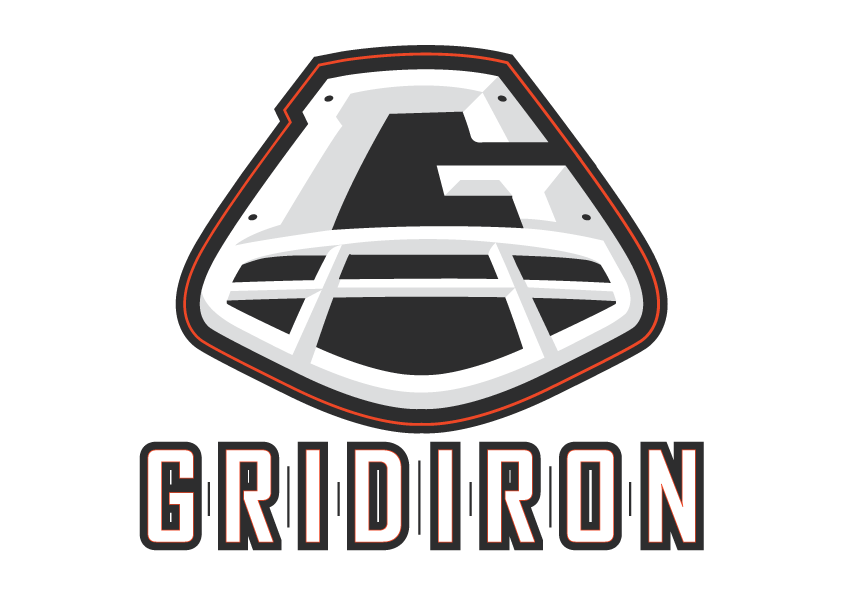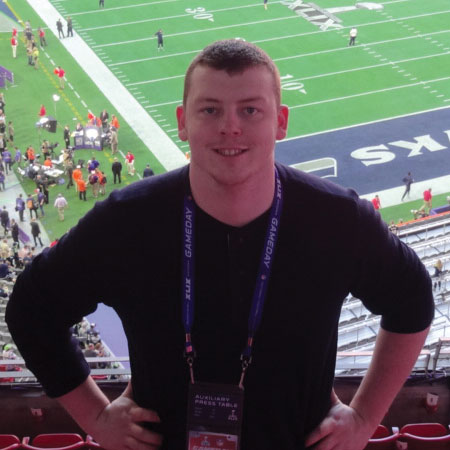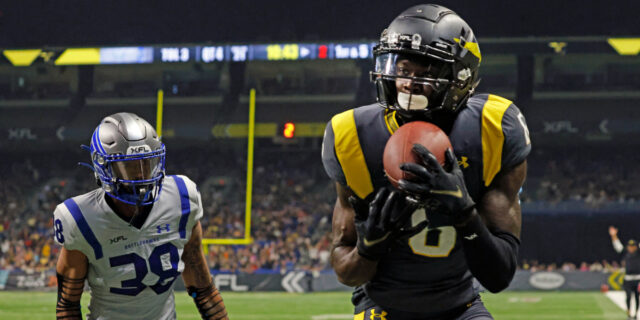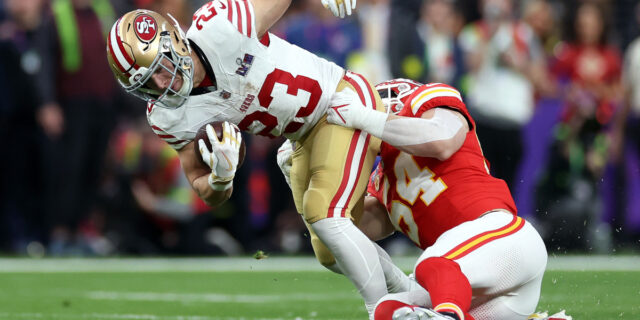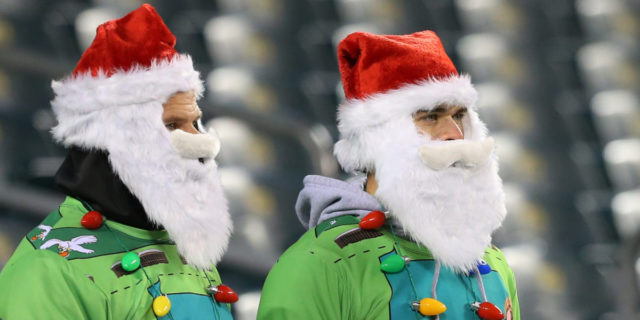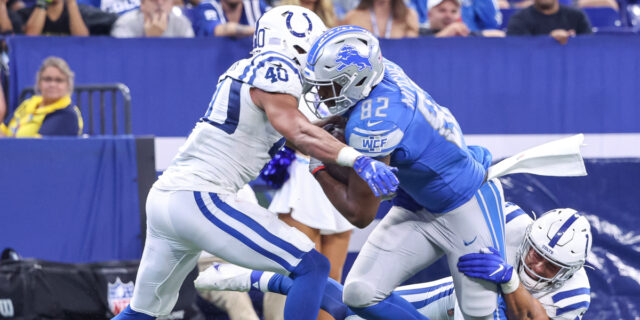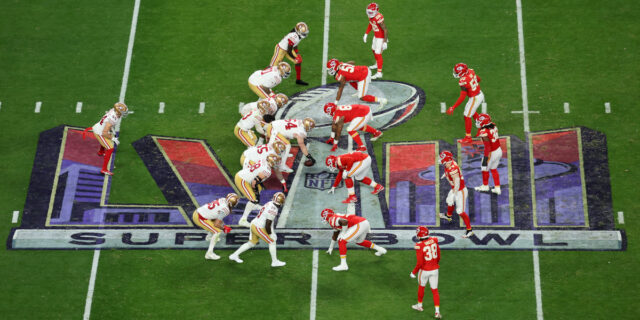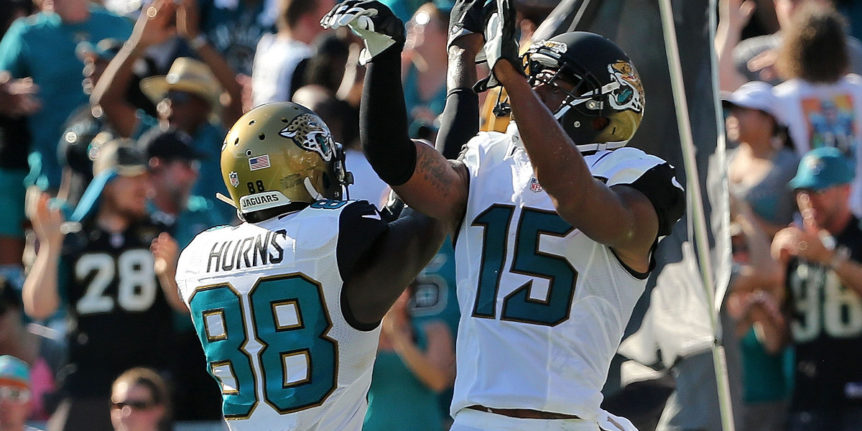
All-in on Allen
This article, from Issue XXXIV of Gridiron magazine, originally appeared in 2016. For individual editions or subscriptions, click HERE
Twenty-five years after a dynamic wide receiver duo stole hearts and minds in Florida, another pair of pass-catchers are making their mark in the same state. Meet the Allen Bernard Brothers, heirs to the Marks Brothers.
Ask a Miami Dolphins fans to reminisce about the 1980s and they’ll do so gladly, with a smile, while uttering one name: Dan Marino. The greatest quarterback to represent South Beach’s finest, despite having zero rings to Bob Griese’s two, Marino is an icon in Miami.
So deep-rooted is his impact that those same Dolphins fans may, just for a moment, forget the genius on the sidelines pulling the strings during the glory years of Marino in the pocket, shuffling around before unfurling the ball with that trademark release. They may briefly ignore the great Don Shula, who led Miami to their two Super Bowl wins, including the only perfect season in NFL history. And if they fail to mention the Hall of Fame head coach who stalked their sideline for a quarter-century, you can bet that they might also overlook the dynamic duo who were often on the end of the end of Marino’s laser-like strikes.
‘The Marks Brothers’, Clayton and Duper, were a fearsome pairing who terrorised defensive backs around the league throughout the 1980s and early ’90s. They can easily sit in the illustrious company of any outstanding wide-out duo in NFL history, be it Jerry Rice and John Taylor, Marvin Harrison and Reggie Wayne, or Cris Carter and Randy Moss. They entered the league a year apart, Duper as a second-round pick in 1982 and Clayton as an eighth-round selection the following winter, and each spent just one season at another professional team; Duper played Arena Football for the Miami Hooters in 1994, while Clayton spent 1993 with the Green Bay Packers. In between those times, they played a key part in a terrifying triumvirate alongside Marino, racking up the majority of their 17,843 receiving yards and 143 touchdowns — and earning all of their combined five All-Pro berths and eight Pro Bowl appearances – while donning Dolphins green. The quality of their performances was like nothing ever seen on an NFL field in Florida.
Until now.
“They are equally my favourites. They are both awesome, unbelievable football players.”
Just 347 miles north (the US equivalent of a daytrip) of Miami, there are a pair of NFL wide receivers evoking memories of the Marks Brothers. And the similarities are stunning.
Like Duper and Clayton, Allens Robinson and Hurns have the same first name; in fact, they go one better and also boast the same middle one, Bernard. They entered the league in the same year, rather than a season apart, but Robinson is a highly-touted second-rounder like Duper, while Hurns is an unheralded steal having gone undrafted – similar to Clayton given the NFL Draft no longer features an eighth round.
The biggest similarity, though, is that they are both extremely talented.
“They are equally my favourites,” Jaguars quarterback Blake Bortles says to Gridiron when asked to choose his favourite Allen. “They are both awesome, unbelievable football players.”
Politically correct though Bortles’ statement may be, it rings true when you consider how he uses his leading wide-outs on the field. You only have to look at Gridiron’s ‘Allen v Allen’ tracker to see how the Jacksonville quarterback shares the ball around between his two main targets, and that’s been the case since the trio entered the league in the same year. “It’s a very unique scenario where we all came into the league at the same time,” adds Hurns. “We are going to see the whole process in terms of starting from the bottom and working our way up.”
That process should come easier to Hurns and Robinson, who have spent their lives working hard to prove doubters wrong and reach the next step.
“Basketball was my first love, but I’ll say that going over somebody for a touchdown is better than making a dunk.”
Improbable though it might seem, given his 6ft 3ins height and natural athleticism, Robinson was not a highly recruited player out of high school. Besides Penn State, the only colleges to offer him a scholarship were ones with decidedly low-key football programs – Buffalo, Toledo and Minnesota. ESPN rated him as a two-star prospect (out of five).
“I think it involved a lot a lot of things that went into that,” says Robinson. “I played running back up until my junior year, so people didn’t really get to see much of me in high school as a wide receiver. And then once I had changed positions I wasn’t clearing house eligible until late in my high-school career.
“They have a sliding scale, based on your grades and your score on your ACT [American College Testing] exam. With the GPA [Grade Point Average] that I had, I needed to get myself a higher ACT score to be eligible to play in college. I didn’t do that until around Thanksgiving of my senior year, so I think a lot of factors like that were involved in me not being that highly recruited.”
None of it could stop Robinson from getting where he wanted to go. A career as a professional sportsman had been in his sights all through the childhood that he spent looking up to his cousin Kevin Glenn, a quarterback currently playing his 16th season in the Canadian Football League.
Robinson had initially believed that his own route would take him to the NBA, but switched his focus from basketball to football in high school. “Basketball was my first love,” he reflects. “But I’ll say that going over somebody for a touchdown is better than making a dunk. Dunks come a lot more frequently throughout the course of a basketball game. I’d rather have that feeling when you go up and make a spectacular play or score a touchdown for your team.”
When the college recruiters failed to come calling, he went to them – attending every football camp that he could get to and creating his own highlight tapes. “Really, it’s just about getting as many eyes on you as possible,” he says. “Once a few teams start to show interest, then you start to see a lot more. It’s a real copycat type of system.”
So, too, is the NFL.
“We always talk about how far we’ve come, and things like that, but it’s never any comparison between me and him.”
After starring at Penn State, Robinson could have been a first-round pick in 2014 but slipped to the end of the second after more than one team allowed themselves to buy into the negative reactions that followed his 4.6sec 40-yard dash at the Scouting Combine.
Jacksonville were the great beneficiaries of such groupthink, plucking Robinson off the board with the 61st pick. For the player, this turned out to be an ideal landing spot. The Jags were rebuilding their passing game from the ground up, selecting a rookie quarterback, Blake Bortles, at No.3 overall and another receiver, Marqise Lee, at No.39.
But it was a player that Jacksonville didn’t pick who might have made all the difference to Robinson’s development into a near-elite NFL player.
Hurns knows a thing or two about what it means to be underestimated himself, after going undrafted that same year. Signed by the Jaguars almost as an afterthought, he not only made it through to the final 53-man roster for the 2015 season, but battled his way into a starting position by Week 1 – justifying his inclusion with four receptions for 110 yards and two scores against the Philadelphia Eagles. Hurns could hardly sustain that pace through a full season, but he has held down a role in the offense ever since. And in 2015, he blazed his way to a 1,031-yard, 10-touchdown season.
There is no question that Hurns benefited from playing opposite Robinson – with opponents slanting their coverages towards his teammate. But what makes the Allen Brothers so effective is the way that they operate in tandem. With almost identical, imposing, size, both players can dominate defensive backs physically. The mismatches they created close to the goalline last season were startling.
What also leapt out in 2015 was how much fun they seemed to have playing together. Hurns was quick to shoot down the idea that they would ever consider themselves to be in competition with one another. “Nah, nah. It’s never like that with us,” he says. “We always talk about how far we’ve come, and things like that, but it’s never any comparison between me and him. We have a great relationship off the field, and that’s what makes us better on the field.”
“I think that’s what’s the most exciting thing about it, just to see how far we can go. We haven’t reached our peak yet.”
Expectations on the field were high entering the 2016 campaign with Jacksonville going from doldrums dwellers to darkhorses. Everywhere you looked, the Jaguars were being tipped to rise up, capitalising on a fearsome young roster and weak AFC South to mount a serious playoff push. But then, reality bit, Jacksonville heading to London at 0-3 following losses to Green Bay, San Diego and Baltimore. Suddenly the talk was about Gus Bradley’s immediate job security rather than the prospect of a breakthrough campaign.
A 30-27 win over the Indianapolis Colts at Wembley quelled that talk, and the Jags’ dynamic pair of wide receivers were at the heart of it. Robinson caught the first touchdown of the day himself, beating his man on a slant route from three yards out. Easier to miss would have been his contribution on the Jags’ final score.
It was Hurns who snared Bortles’s quick pass by the right-hand sideline, before carving his way back across the field for a 44-yard touchdown. But it was Robinson who made sure that his teammate got over the line, tracking across from the far side of the field to cut off Colts safety Mike Adams in pursuit at the 10-yard line. “I broke one tackle and then everybody did a great job blocking for me,” said Hurns afterwards. “Robinson threw a key block to free me.”
On that day, Robinson and Hurns may well have saved their head coach’s job. “It was hard not to hear it,” acknowledged Hurns afterward. “Everybody knows. We wanted to go out and protect the team and protect Gus.”
In the long run, though, that might be a task too large even for the Allen Brothers. Bradley has had ample time to implement his vision in Jacksonville and the reality is that his still being in the job beyond the end of the season would be a major surprise. But, as long as Robinson and Hurns remain together in Jacksonville, fans will have at least some cause for optimism. And on that front, the signs are encouraging. Hurns signed a four-year, $40m contract in the offseason. Robinson’s rookie deal already runs through to 2018, but the Jaguars can be expected to offer him a generous extension at the end of this year. “It’s very exciting,” said Hurns. “We’ve still got a lot of time to improve. I think that’s what’s the most exciting thing about it, just to see how far we can go. We haven’t reached our peak yet.”
Indeed not. And if they follow on their current path, perhaps the Allen Brothers can follow the Marks Brothers into the vaulted company of the best wide receiver tandems in NFL history.
This article, from Issue XXXIV of Gridiron magazine, originally appeared in 2016. For individual editions or subscriptions, click HERE
